18+ Sample Sponsored Research Agreement
-
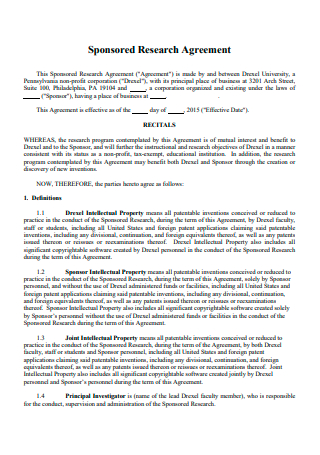
Sponsored Research Agreement Template
download now -
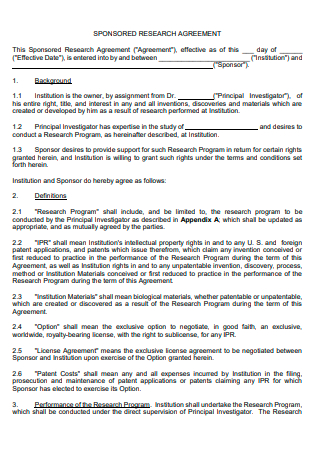
Basic Sponsored Research Agreement
download now -
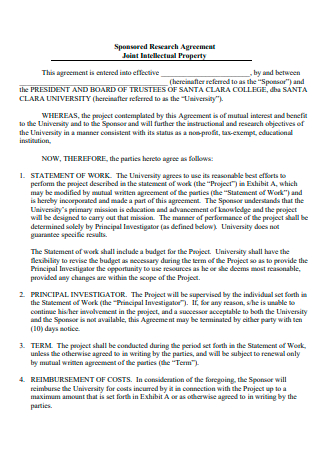
Joint Intellectual Property Sponsored Research Agreement
download now -
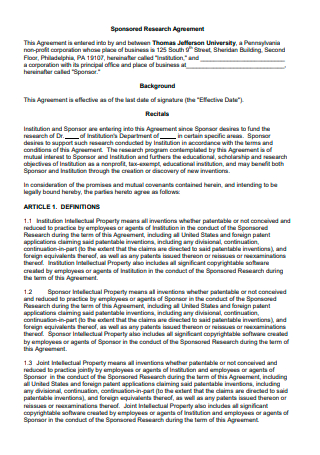
Sponsored Research Agreement Example
download now -
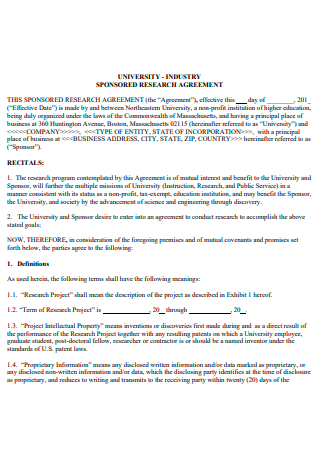
Industry Sponsored Research Agreement
download now -

Printable Sponsored Research Agreement
download now -

Annotated Sponsored Research Agreement
download now -
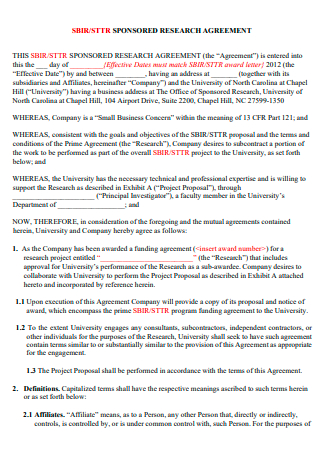
Sponsored Research Agreement in PDF
download now -

Sample Sponsored Research Agreement
download now -
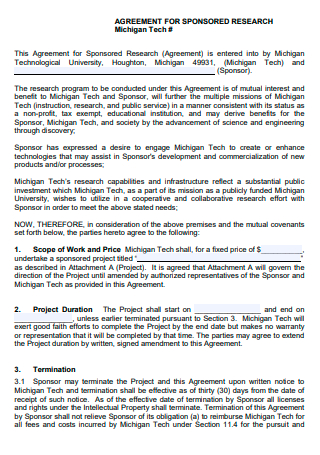
Formal Sponsored Research Agreement
download now -
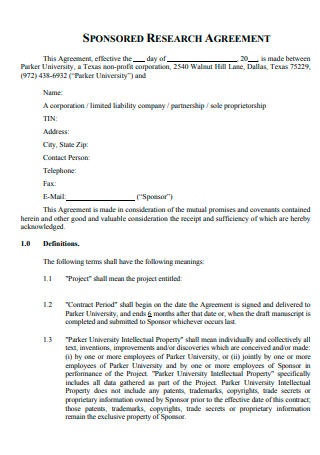
Simple Sponsored Research Agreement
download now -
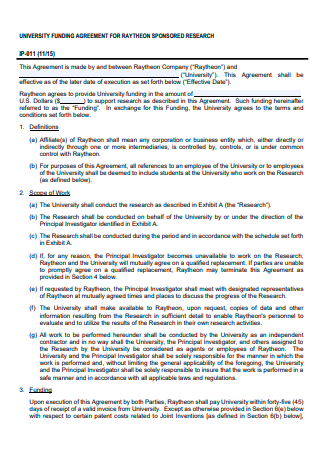
Sponsored Research University Funded Agreement
download now -

Office of Sponsored Programs Research Agreement
download now -

Sponsored Research Agreement Format
download now -
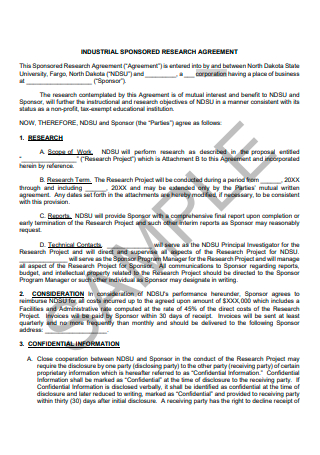
Industrial Sponsored Research Agreement
download now -
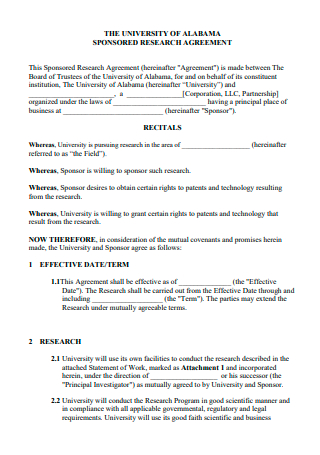
University Sponsored Research Agreement
download now -
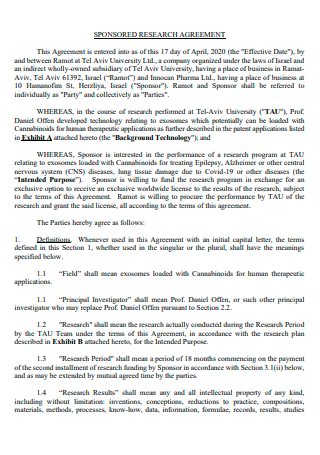
Draft Sponsored Research Agreement
download now -
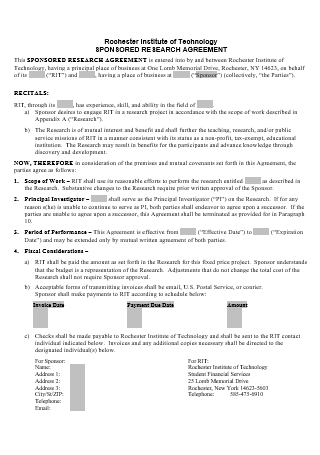
Institute of Technology Sponsored Research Agreement
download now -
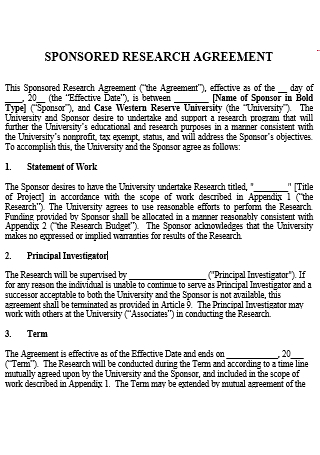
Sponsored Research Agreement in DOC
download now
FREE Sponsored Research Agreement s to Download
18+ Sample Sponsored Research Agreement
What Is a Sponsored Research Agreement?
Sponsored Research Agreement: What’s Inside?
How to Write a Sponsored Research Agreement
FAQs
How is a memorandum of understanding different from this agreement?
How long does research usually take?
Another example of a research agreement is an unfunded agreement. What is it?
What Is a Sponsored Research Agreement?
First of all, what is the meaning of research? Simply put, research means the process of assembling substantial knowledge or data for the purpose of sharing them in appropriate settings. In longer terms, research refers to a systematic inquiry process that includes data gathering, documenting of key information, and analysis and interpretation of that data/information in accordance with appropriate procedures established by certain professional domains and academic disciplines. Research is especially important since it allows people the opportunity to expand their knowledge base, to let them know what they’re really up against in the normal world, and to further build their credibility as an individual.
A sponsored research agreement, which can be sometimes known as a grant, is a legal document in which one party gives funding to a beneficiary to assist the completion of a certain research project or similar activities. In this arrangement, the sponsoring party may be a foundation, government entity, for-profit corporation, research institute, or even a university. The beneficiary party in this agreement is usually a university. The funds that are awarded under this agreement must be spent according to the budget, and the agreement could demand that any funds not spent on the project be refunded to the sponsor.
Sponsored Research Agreement: What’s Inside?
Since a sponsored research agreement is considered a legal document, it must be written properly and without any fuss. With that being said, a sponsored research agreement will most certainly contain these common elements:
How to Write a Sponsored Research Agreement
Agreements usually consist of specific variables such as deliverables, objectives, payment, publication, ownership of intellectual property, and so on. Such clauses present in agreements may make them incredibly daunting to write especially for a novice. But with the help of the following steps, the burden of your writing process should be eased.
-
1. Identifying the Parties Involved
This is the first step to be performed when writing a sponsored research agreement. In this first step, the main parties that are involved in the agreement are to be identified. They are the sponsor and the awardee/beneficiary. The agreement sponsor can be a foundation, a government entity, a for-profit agency, a research institute, or a university. The agreement awardee/beneficiary, in most cases, is usually a university that intends to conduct the research project. In addition to the main parties of the agreement, the principal investigator of the research project should also be identified, whose role is to prepare, conduct, and administer the grant of this sponsored research project.
-
2. Writing the Main Clauses
After identifying the parties involved in the sponsored research agreement, this step will then follow. In this step, the main clauses of the agreement are to be written down. Some of the main clauses of the sponsored research agreement include the project performance, project control, the scope of work, and the terms for research conduct. Dedication and commitment to the project by the beneficiary should be highlighted under project performance, terms for proper project authority and control will be stated under the project control clause, the scope of work should comprise every research task and the plan on achieving it, and the terms for research conduct will dictate on how the research is going to be carried out with accordance to the scope of work and it should also state what the deliverables of the project are.
-
3. Writing the Boilerplate Clauses
After writing the main clauses of the sponsored research agreement, the boilerplate clauses will then follow in this step. Boilerplate clauses essentially mean standard clauses that can be found in the majority of legal documents that exist. Some of the boilerplate clauses that can be found in this type of agreement include the term and termination clause, the warranty disclaimers, the legal compliance clause, and the signature section. The term and termination clause should signify the start and end dates of the agreement, the warranty disclaimer section should disclaim any and all implied and express warranties that are relevant to the research process, the legal compliance clause should specify that the agreement will be applied in accordance to all applicable laws, and the signatures section is where the parties involved, as well as the principal investigator, will affix their signatures and the date of signature.
-
4. Final Steps
After writing the boilerplate clauses of the sponsored research agreement, this last step will follow. Actually, it can be broken further down into the verification phase and the signing phase. As the entire draft of the agreement has been completed, the verification phase will then take place. It is recommended that someone who has a vast knowledge of how agreements and contracts work (a lawyer) should look over the draft for any inconsistencies and advise for any amendments in the document. Once the verification process has been completed and the agreement finalized, the signatures can then be affixed which will put the terms of the agreement in motion.
FAQs
How is a memorandum of understanding different from this agreement?
Firstly, a memorandum of understanding is different from this type of agreement since it is a non-binding document. Compared to a sponsored research agreement, a memorandum of understanding may describe a potential partnership, sponsorship, or future activity, but it does not bind the participants to accomplish or deliver the project unless specifically stated in a subsequent legally binding agreement. A memorandum of understanding may clearly specify that it is non-binding or may relate to the parties’ lack of legal duty in other ways.
How long does research usually take?
How long the research process takes is usually determined by the type of the project, how effectively the topic is covered, what resources are accessible in the library or online, the time allocated for the assignment, and the researcher’s skill. When you suspect that the research process may be complicated, begin early so that you can change your plan or article as needed. Furthermore, some themes will contain a lot of content, while others may have very little. It is common for studies to take longer than expected.
Another example of a research agreement is an unfunded agreement. What is it?
An unfunded research agreement is a contract in which two or more parties agree to work together on a certain research endeavor. The agreement would normally include a statement of work, performance duration, and IP ownership conditions, as well as provisions for effort commitment, resource contribution, visiting researchers, or other value exchange in support of the partnership. In contrast to a sponsored research agreement, in which a grant is normally involved, each party in this form of agreement is responsible for its own expenditures associated with the study.
Getting sponsored when doing research can be a huge advantage as it saves you from getting your money out of your own pocket and instead utilizing the grant that was provided to you by the sponsor. However, as with any other research, huge responsibilities are involved. A sponsored research agreement enables the sponsoring process to occur, and in this article, different sample articles of this agreement exist to provide you with an effective reference should you want to know more about it or if you want to make one.
